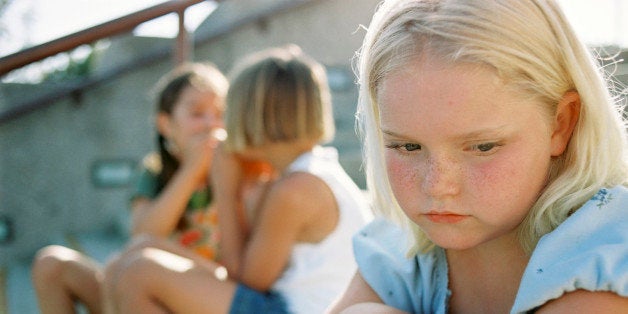
As a part of growing up, most of us have experienced bullying either directly or indirectly. And despite our efforts to build awareness, today bullying still persists. As a society, we have to not only work to eradicate bullying, but also to prepare children for it. Like animals in the jungle, if somebody is weak, they get picked on so another can assert dominance. And the sad truth is, the behavior kids face today is at a new high, or low, depending how you measure it. Thanks to the Internet, cyber bullying is a whole new outlet for kids to attack the weakest members of the social herd outside the classroom. So how can we, as adults, combat this critical issue? As it turns out, we're not as powerless as we might at times feel. Here are a few steps we can take.
In the School Environment
We show up for kindergarten excited to be a part of something. We take risks, we raise our hands without hesitance, we want to participate and grow. And that can work out pretty well for a while, but then third or fourth grade rolls around, and we get made fun of for getting an answer wrong. The next time the opportunity to participate in class comes up, that little voice inside tells us, "Hey, that didn't feel good last time, let's not take that risk again."
School should be a place for taking risks and seeing good things happen. It should be an environment where people can make mistakes and try new things. I like to call it learning ugly. Like in sports, learning should be ugly at times. If you go to a sports practice and never strike out, then the pitcher isn't pitching hard enough. But the difference is with sports, it's expected that you're going to learn ugly -- in school it's not so safe to fail, which results in a sacrifice of knowledge and growth.
In school, our intentions should be focused on reprograming the experience of taking risks and having something bad happen as a result. We want our youth to understand that if they take a risk, something good should happen next. It's up to us to create this type of learning environment where positive reinforcement is king -- not just for getting the right answer, but for trying and taking that risk in participating. Being positive and uplifting is the most powerful tool.
In the Home Environment
Kids need the support of a family to lift them up, such as an available family that listens to them at the dinner table. At least four times each week, families should make the effort to sit together for a meal. No cellphones, no TV, just talking and listening -- good old fashion conversation. Let kids know that they matter, and give them a voice in a safe place where their thoughts and opinions are heard.
Find activities, such as sports or music lessons, which will build kids' self esteem so they can withstand the impact of other's bad behavior that can't be controlled outside the home.
Help them develop a work ethic by doing chores around the house such as cleaning their room or even watering a plant. The overwhelming hours kids spend watching TV, using social media and texting do not teach them how to become an important part of the operations of the family and the world. These two roles tend to go hand-in-hand.
Most importantly, give them a place where they belong, so if they feel out of place at school, at least they feel comfortable at home. Without a sense of accomplishment and value outside of peer acceptance kids may take extreme measures to let people know how much they are hurting.
SPACE
This is a great acronym that shows the five ways parents and caregivers can create a safe space for kids to flourish.
S--Safe place to learn and grow.
P--Perspective. Shifting perspective to understand differences.
A--Awareness. Recognizing what it is that we're most aware of (such as ethnicity and economic status), and redirecting if misguided.
C--Choice. Making it safe for people to make a choice, and recognizing that we have one.
E--Energy. Getting in touch with energy. You can feel if a setting, such as the classroom, has a positive or negative environment.
The ugly truth is that bullying has gone too far and we all need to step up and do our part to make a difference. But the good news is, with a little effort, we can all look around and do something to help.